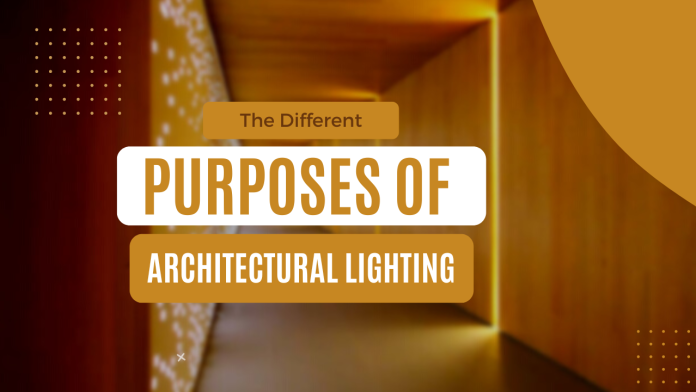Architectural Lighting design can be difficult to get right, especially if it’s not something you have experience with or you haven’t had formal training on the subject. To help you out, we’re going to go over the many purposes of Architectural Lighting and how it can impact your projects in both good and bad ways. We’ll also cover some of the technical aspects of Architectural Lighting so that you can understand what kinds of considerations need to be made when building and maintaining your Architectural Lighting design.
Significance Of Architectural Lighting
Designing buildings to the right specifications is all about balance, making sure there are no major light or dark spots that draw your eye to one area. Getting the right light fixtures and using Architectural Lighting work together in concert to make your buildings functional, beautiful, and welcoming for everyone.
While it can be a challenge to balance all these different components, it’s even more difficult to factor in environmental sustainability. Using energy-efficient lighting not only makes you look good, but it also means your buildings are kinder to your environment. That’s why Architectural Lighting works are about so much more than aesthetics—it’s about using that beauty for a greater purpose.
Color Temperature And Its Influence
Color temperature is important to architects, designers, and lighting professionals because it dictates the general light output and visual appearance of a space. Cooler color temperatures – also known as cool colors – are known for appearing bluish or purplish in hue, which contrasts against warmer color temperatures (often called warm colors) that often appear more reddish or yellowish in hue. Both cool and warm colors emit a certain degree of lightness or darkness.
If a person were to equate color temperature with an artistic temperament, cool colors would be considered more introverted and calm, while warm colors are more extroverted and dynamic. In terms of Architectural Lighting design, there are several reasons why architects might choose one color temperature over another for their project’s unique needs.
Lumen Count And Its Importance
Generally, the minimum lumens for Architectural Lighting should be in the range of 500-1000 lumens. You should also look for a color temperature that is comfortable for you. This can range from 2900K to 6500K depending on your personal preference. Lights with higher color temperatures will feel colder and lights with lower color temperatures will feel warmer.
The Led Technology In Architectural Lighting
LEDs in Architectural Lighting work because they offer three significant benefits over other types of lights.
- LEDs use approximately 50% less energy than incandescent and fluorescent lights, thus reducing the demand for limited energy sources.
- LEDs are thinner than traditional bulbs and use much less physical space.
- LEDs last about six times longer than other kinds of bulbs (approximately 20-25 years).
That’s a significant amount of time when you consider how many buildings exist in urban areas. Imagine if everyone with any kind of Architectural Light replaced it with LEDs. The energy savings alone would be staggering! Not to mention all of those buildings would last longer and require less maintenance because LEDs don’t burn out like other bulbs.
Residential Versus Commercial Illumination
Architectural illumination is often much more complicated than residential lighting. Typically, when illuminating a house, one size fits all – it doesn’t matter how many windows are on the front or how big they are. However, the same does not hold for an office building with two different types of architectural illumination. Office buildings require two different types of architectural illumination: floodlights and uplights.
- Floodlights highlight a large area, making them ideal for exterior use around a building.
- Uplights, on the other hand, are mounted in specific areas and highlight specific things.
Some commercial spaces use uplights to highlight architectural features, such as inside a large window. The different purposes for Architectural Lighting require professionals to use different fixtures depending on what they’re illuminating and how much money they want to spend.


